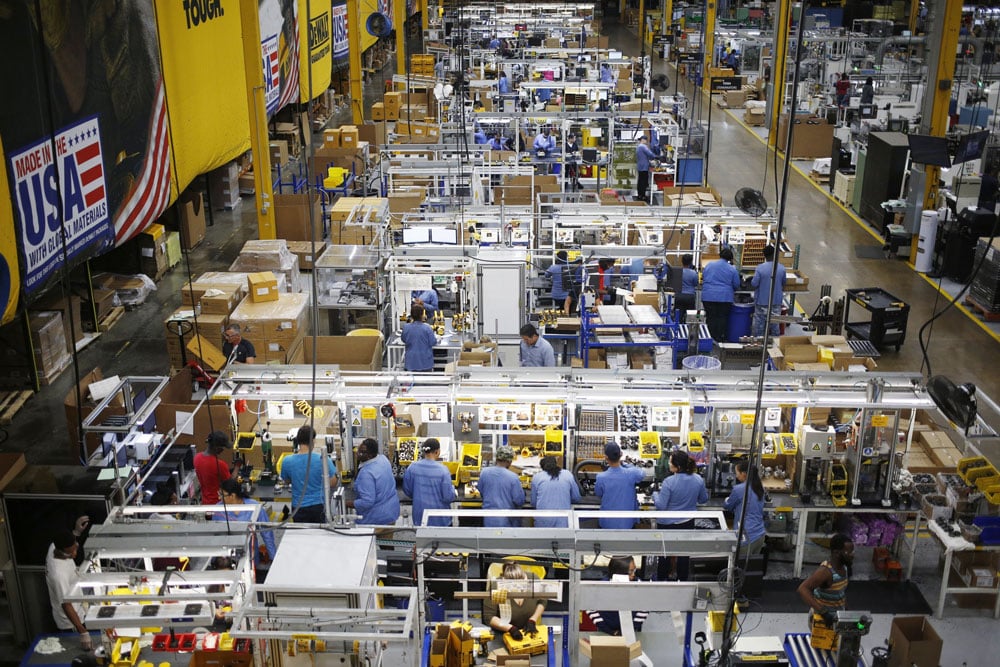Todd Warner on The Labor Pool Podcast: How Manufacturers Can Solve Retention Challenges
What’s Causing the Manufacturing Workforce Crisis?
- 31% daily absenteeism in some facilities
- 100%+ turnover rates for entry-level roles
- Rising hiring costs with little improvement in retention
How Schedule Autonomy Increases Retention in Manufacturing
Giving workers more control over their schedules reduces absenteeism, increases retention, and attracts new talent.
Key Benefits of Schedule Autonomy:
- Lowers Absenteeism – Workers are more likely to show up when they control their schedules.
- Reduces Turnover – Schedule autonomy helps retain employees long-term.
- Improves Productivity – Workers perform better when they work shifts that fit their lives.
- Expands the Talent Pool – MyWorkChoice has double the industry standard of female workers in manufacturing (57% vs. the usual 28-35%).
How MyWorkChoice is Reshaping Manufacturing Jobs
Rather than forcing workers into rigid shifts, MyWorkChoice uses demand-driven scheduling to improve both worker retention and operational reliability.
How It Works:
- Workers apply through an app, making hiring faster and easier.
- They choose their own schedules per week.
- Same-day pay options improve financial flexibility.
- Facilities over-hire strategically to ensure shift coverage and reduce last-minute absences.

🔗 Read: The Benefits of a Demand-Driven Workforce Model
How to Get Leadership Buy-In for Flexible Schedules
One of the biggest challenges in implementing schedule autonomy is convincing leadership.
“Manufacturing leaders assume more autonomy will create chaos, but the data says otherwise,” Todd said.
Steps to Convince Leadership:
- Show the Cost of Turnover – High turnover costs millions annually. Schedule autonomy improves retention, reducing hiring costs.
- Analyze Absenteeism by Shift – Identify problem areas by department, role, and shift rather than using overall percentages.
- Start with Entry-Level Roles – Pilot autonomous scheduling in high-turnover positions before expanding.
Why Workforce Agility is Essential for the Future of Manufacturing
Why Now?
- Reshoring is driving up demand for workers.
- The competition for talent is growing across all industries.
- Younger generations prioritize work-life balance over rigid job structures.
- High turnover
- Increased hiring costs
- Ongoing production delays
How to Implement Demand-Driven Scheduling in Manufacturing
To successfully transition to a demand-driven workforce model, manufacturers should take a phased approach.
Step 1: Identify Problem Areas
- Analyze absenteeism by shift and role.
- Look for departments with the highest turnover.
Step 2: Pilot Autonomous Scheduling in High-Turnover Roles
- Offer part-time options for entry-level jobs.
- Allow workers to swap shifts without penalties.
Step 3: Invest in Workforce Technology
-
Use scheduling apps to automate shift management and reduce admin burden.
-
Enable self-service scheduling for workers.
Step 4: Scale Workforce Agility Across the Organization
- Expand the model to full-time hourly roles.
- Align flexibility with production needs.
The Time to Adapt is Now
Manufacturing can no longer afford to operate under outdated workforce models. Schedule autonomy and workforce agility are the future.






